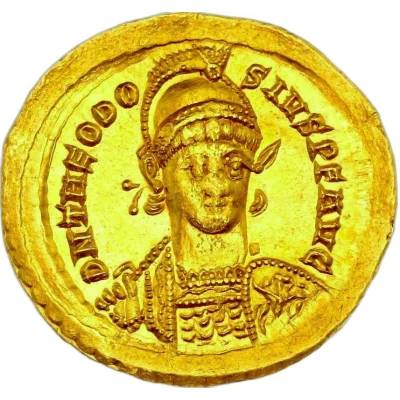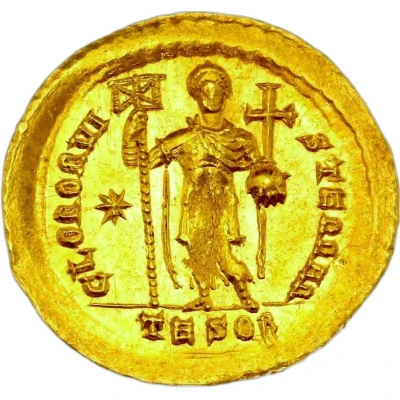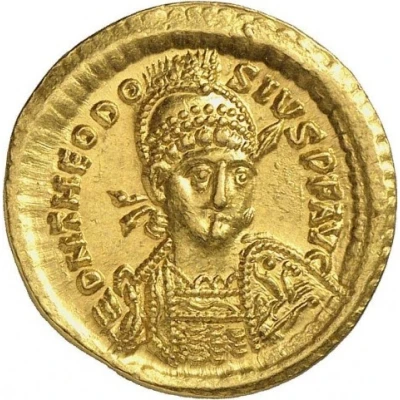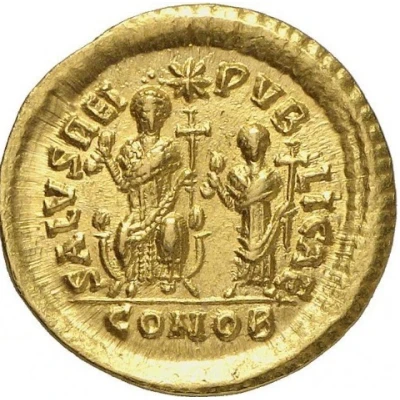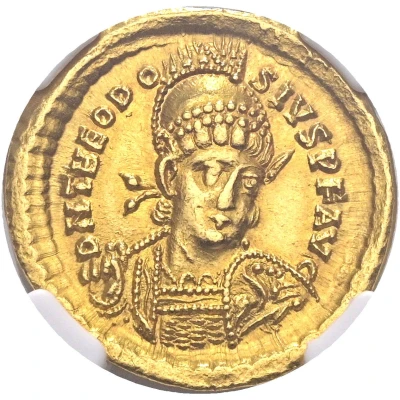
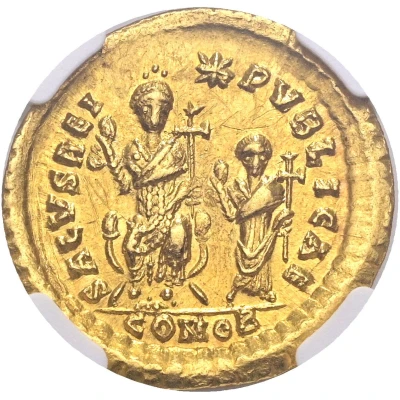

© Janovsky (CC BY)
Solidus - Theodosius II SALVS REIPVBLICAE; Constantinopolis
425 year| Gold | 4.45 g | 22 mm |
| Issuer | Eastern Roman Empire (Rome) |
|---|---|
| Emperor | Theodosius II (402-450) |
| Type | Standard circulation coin |
| Year | 425 |
| Value | Solidus (1) |
| Currency | Solidus (330-476) |
| Composition | Gold |
| Weight | 4.45 g |
| Diameter | 22 mm |
| Shape | Round (irregular) |
| Technique | Hammered |
| Orientation | Variable alignment ↺ |
| Demonetized | Yes |
| Updated | 2024-10-10 |
| Numista | N#372948 |
|---|---|
| Rarity index | 97% |
Reverse
Theodosius II seated facing and Valentinian III standing, wearing consular robes, mappa in right hand, cruciform scepter in left; star above, mintmark in exergue.
Script: Latin
Lettering:
SALVS REI-PVBLICAE
CONOB
Unabridged legend: Salus Reipublicae
Translation: Health of the Republic
Interesting fact
One interesting fact about the Solidus - Theodosius II (SALVS REIPVBLICAE; Constantinopolis) (425) coin is that it was used as a form of currency in the Eastern Roman Empire, also known as the Byzantine Empire, during the reign of Emperor Theodosius II in the 5th century. The coin was made of gold and weighed 4.45 grams, which was a significant amount of gold for a coin at that time. The coin's design featured an image of the emperor on one side and the inscription "SALVS REIPVBLICAE" (meaning "the safety of the republic") on the other side, along with the name of the city where it was minted, Constantinopolis. The coin was used for trade and commerce throughout the empire and was considered a symbol of the empire's wealth and power.
